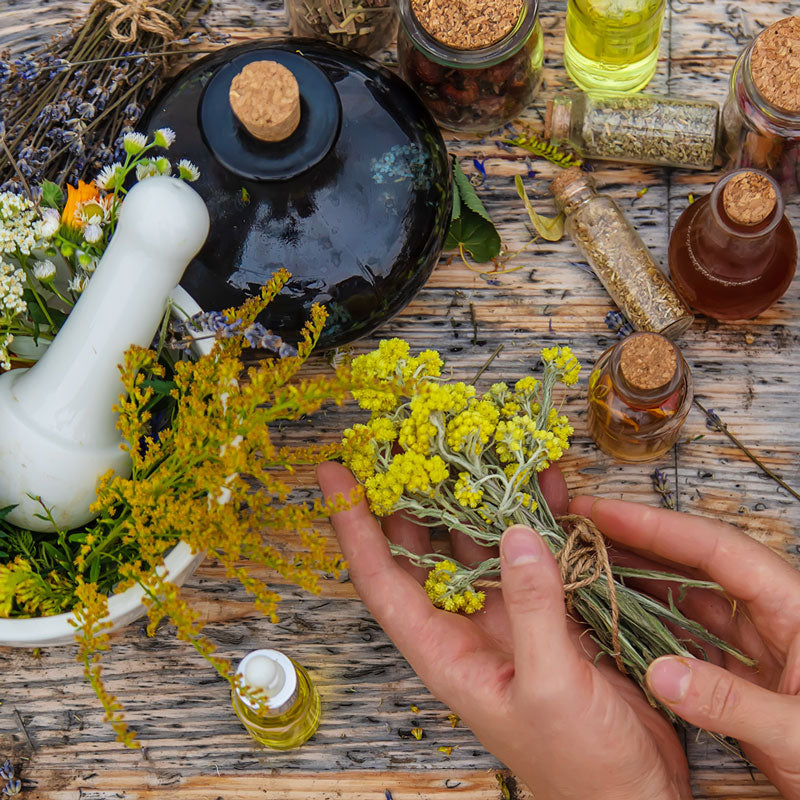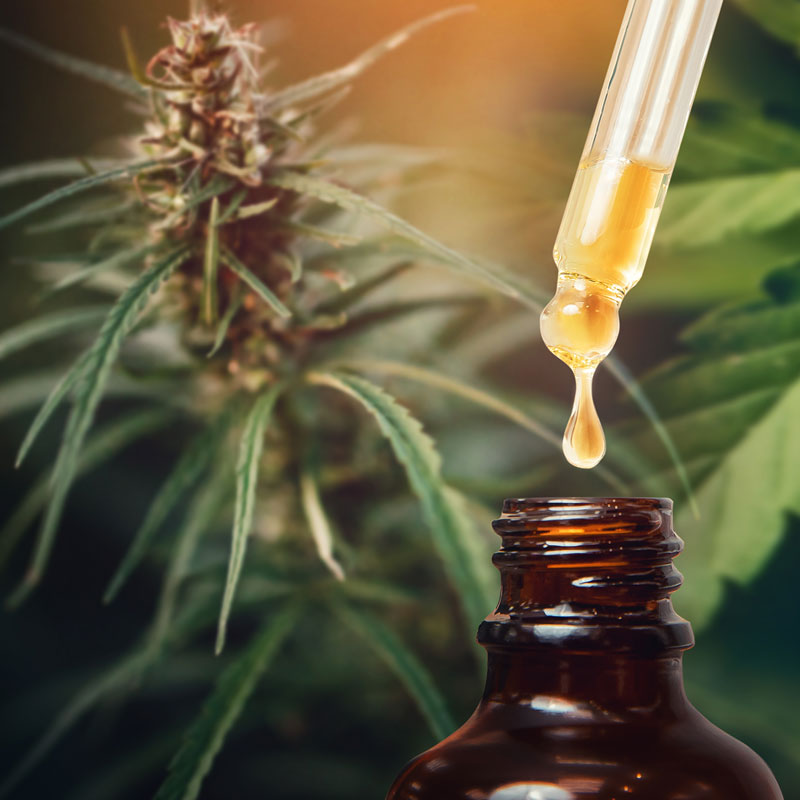Guide to Diluting 200 Proof Food Grade Ethanol for Tinctures
Welcome to our simple guide on how to dilute 200 proof ethanol! In this post, we will explain why someone might want to lower the strength of pure ethanol (200 proof) and show you how to do it in easy steps. Whether you are just starting out or you already have some experience, you'll find clear explanations, simple formulas, and quick reference tables to help you mix your ethanol with water correctly.
You might need to dilute 200 proof ethanol for many reasons, such as making it safer for cleaning, use in recipes, or other applications. This guide will help you understand exactly what you need to do so that you always end up with the right concentration of alcohol.
Understanding Proof and ABV
Before we dive into the steps, let’s learn some basic terms:
-
200 Proof Ethanol:
This means the ethanol is 100% pure alcohol. In other words, if you have 200 proof ethanol, there is no water mixed in—it’s completely ethyl alcohol. -
Proof and ABV:
The term “proof” is a way to show how much alcohol is in a liquid. It is always twice the percentage of alcohol by volume (ABV). For example:-
100 proof ethanol is 50% alcohol (because 100 divided by 2 is 50).
-
80 proof ethanol is 40% alcohol (80 divided by 2 equals 40).
-
Example:
If you start with 200 proof ethanol and want to make it less strong, say 150 proof, you are lowering the alcohol content. In 150 proof, the alcohol is 75% of the final mixture. This means that if you mix the pure alcohol with water, the new mixture will be only 75% alcohol instead of 100%.
By understanding these terms, you will be able to see why adding water changes the strength of the ethanol and how to use simple math to get the concentration you need.
The Science of Dilution
When you mix two liquids, like ethanol and water, the total space they take up is not always what you expect. This is because ethanol and water are different. Ethanol is lighter and takes up more space per gram than water. For example, 1 gram of ethanol takes about 1.27 milliliters, while 1 gram of water takes about 1.00 milliliter.
Another interesting thing happens when you mix these two liquids: they “contract.” This means that the final volume of the mixture is a little less than the sum of the individual volumes of ethanol and water. The molecules fit together more tightly than when they are separate. This is why, if you mix 2 fluid ounces of ethanol with 2 fluid ounces of water, you might end up with only about 3.8 or 3.9 fluid ounces in total.
Understanding this science helps you know why we need special formulas and measurements when we dilute 200 proof ethanol to lower strengths.
Measuring by Weight vs. Volume
There are two ways you can measure liquids: by weight or by volume. Here’s why measuring by weight is usually better for diluting ethanol:
-
Measuring by Weight (using a scale):
When you measure by weight, you are counting how many grams of ethanol or water you have. This method is very accurate because the weight stays the same even if the liquid contracts when mixed. The density difference (ethanol being lighter than water) doesn’t change the mass, so you always know the exact amount of each ingredient. -
Measuring by Volume (using cups or measuring jugs):
When you measure by volume, you are looking at how much space the liquid takes up (like in milliliters or fluid ounces). Because of the different densities and the contraction that happens when mixing, the volume you add may not add up perfectly to what you expect. This can lead to mistakes in the final strength of your mixture.
In short:
For the most consistent and accurate results, especially when working with different densities and contraction issues, it’s best to measure your ethanol and water by weight. This way, you can be sure that your ratios are right, and you will get the exact alcohol strength you need.
The Dilution Process: Step-by-Step
Diluting 200 proof ethanol might sound complicated, but it’s really just a matter of adding the right amount of water to your pure alcohol. Here’s a simple, step-by-step guide:
-
Choose Your Final Proof:
Decide what strength you want your final mixture to be. For example, if you want 150 proof ethanol (which is 75% alcohol), you know that 75% of your final mix should be pure alcohol. -
Know Your Ratios:
Since 200 proof ethanol is 100% alcohol, you are lowering the percentage by adding water. For instance, to get 150 proof, your mixture should be 75% ethanol and 25% water. -
Calculate the Amounts:
Use a simple formula (explained in the next section) to figure out how much water to add compared to the ethanol you start with. This step helps you know the exact ratio for your desired strength. -
Measure Accurately:
Always use a digital scale to measure the weight of ethanol and water. Measuring by weight is more accurate than using cups or jugs, because it doesn’t change when the liquids mix. -
Mix Well:
Once you have measured the right amounts, mix them together thoroughly. The result will be a safe and correctly diluted ethanol solution.
VII. Easy-to-Understand Formulas
Let’s break down the math in a simple way so that anyone can follow along. When you start with 200 proof ethanol (pure alcohol) and want to make it weaker, you add water. The basic idea is:
-
The more water you add, the lower the strength (proof) of your final mixture.
Simple Formula for Dilution by Weight
If you begin with a certain weight of 200 proof ethanol, you can calculate the amount of water needed with this formula:

How This Formula Works:
-
Ethanol Weight (g):
This is the weight of the pure ethanol you start with. -
Desired Proof:
This is the strength you want your final mixture to be. For example, if you want 150 proof, then the desired proof is 150. -
(200 - Desired Proof) / Desired Proof:
This fraction tells you how much water you need to add compared to the ethanol.
For 150 proof, it becomes:

This means for every 3 grams of ethanol, you add 1 gram of water.
Example:
If you have 100 grams of 200 proof ethanol and you want to make 150 proof:
-
Step 1: Calculate the water needed:

-
Step 2: Mix 100 grams of ethanol with about 33.3 grams of water.
-
Result: Your final mixture is about 150 proof ethanol.
Note on Volume and Contraction:
When measuring by weight, you don’t have to worry about how the liquid volumes might shrink (called volumetric contraction). The weights stay the same even if the volume gets a little smaller after mixing. This is one of the reasons why using a digital scale is the best choice for accuracy.
Quick Reference Tables
Use the tables below to calculate how much ethanol and water to add to end with a certain volume.
| Final Proof | % ABV | Ethanol Weight (g) | Water Weight (g) |
|---|---|---|---|
| 190 | 95% | 182.9 | 12.2 |
| 170 | 85% | 163.7 | 36.6 |
| 150 | 75% | 144.4 | 61.0 |
| 130 | 65% | 125.1 | 85.4 |
| 110 | 55% | 105.8 | 109.8 |
| 90 | 45% | 86.6 | 134.2 |
| 70 | 35% | 67.4 | 158.6 |
| 50 | 25% | 48.1 | 183.0 |
| 30 | 15% | 28.9 | 207.4 |
Tips for Consistent, Accurate Results
To ensure you always get the correct mixture when diluting 200 proof ethanol, keep these simple tips in mind:
-
Always Use a Digital Scale:
Measuring by weight (in grams) is much more accurate than measuring by volume. A digital scale gives you precise numbers, so you know exactly how much ethanol and water you’re using. -
Double-Check Your Measurements:
Before mixing, take a moment to check that you’ve measured the right amounts. Even a small error can change the final proof of your solution. -
Work in a Consistent Environment:
Temperature can affect the density of liquids slightly. Try to work in a room with a stable temperature so that your measurements are as accurate as possible. -
Mix Thoroughly:
Once you combine the ethanol and water, stir or shake the mixture well. This ensures the liquids mix evenly, giving you a uniform final product. -
Record Your Process:
It can be helpful to write down your measurements and the proof you’re aiming for. This way, if you need to repeat the process, you have a record of what worked. -
Practice Safety:
Always handle ethanol carefully. Use gloves and work in a well-ventilated area. Safety is as important as accuracy when working with chemicals.
Following these tips will help you achieve consistent and accurate results every time you dilute ethanol, making your process reliable and safe.








